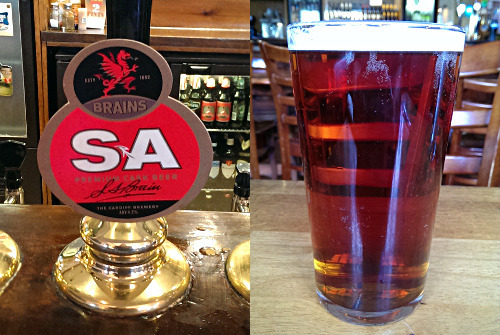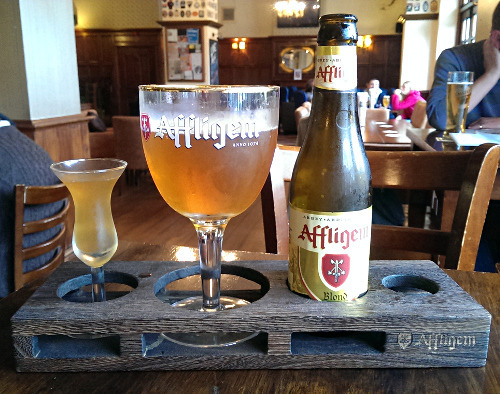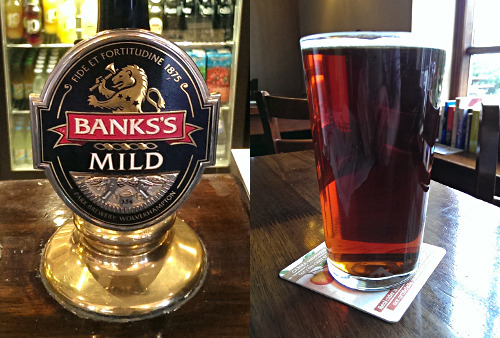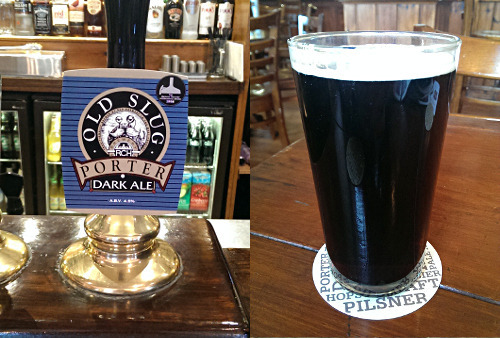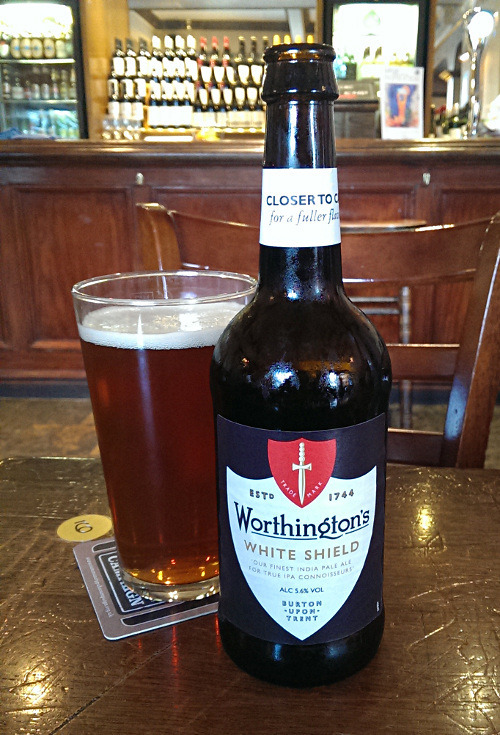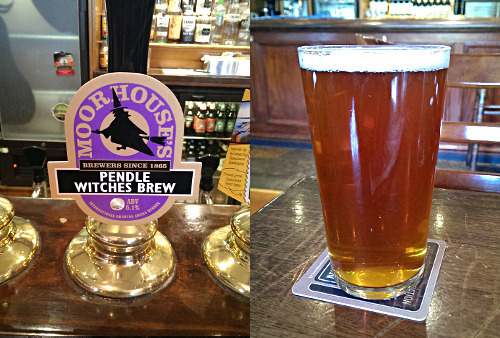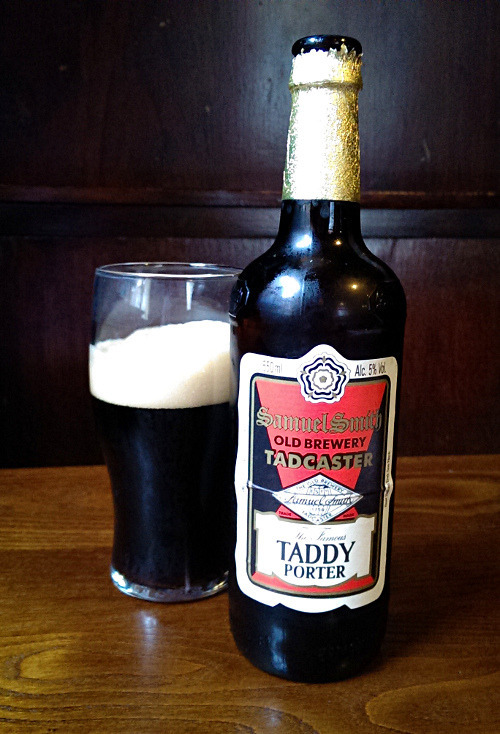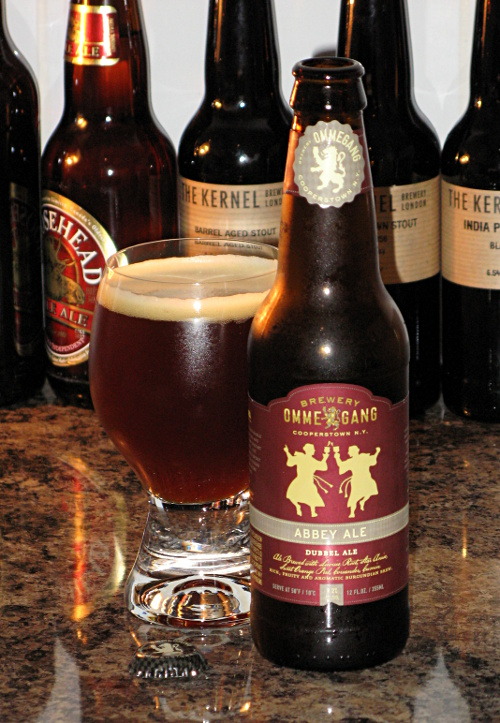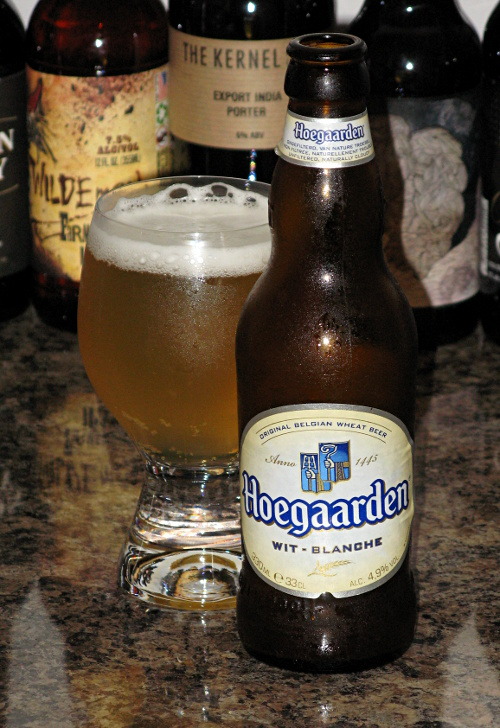Perhaps I missed a trick by not covering this Munich-brewed lager during October. Or at least during Oktoberfest, much of which—in a rare departure from the traditional Teutonic common-sense approach to matters—is in September.
In fact, this one had been sat around the kitchen for a while before I noticed the Mindestens haltbar bis Ende date on the bottle. I don’t know exactly what that means, but it sounds fairly sure about it, so we’d better get a move on.
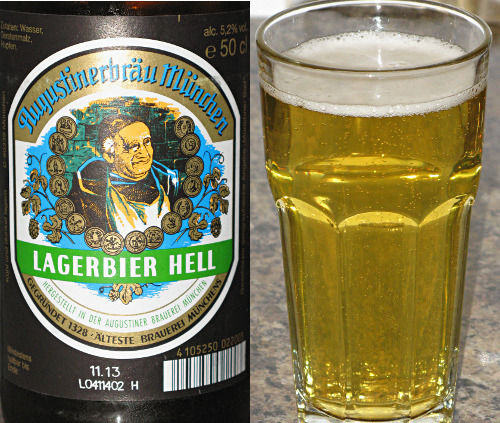
Behind that quite handsome, ornate label sits a predictably pale, golden lager with a thinnish head of white froth which doesn’t hang around.
On cracking open the bottle and pouring, there’s a strong waft of a beery, slightly stale aroma that’s neither alluring nor especially offputting.
There isn’t a great deal of flavour of course: German lagers tend to be made for drinking by the Steinful and getting heartily yet pragmatically sloshed in the Bierkeller rather than savouring slowly by the fire.
There’s a sort of maltiness in there somewhere, along with some strangely sharp-tasting fruit notes, but not even the faintest hint of hops, at least to my palate, which admittedly is more accustomed to gigantic American-style IPAs and whatnot.
All in all, Augustiner Hell isn’t an unpleasant beer by any means, and might be quite refreshing if drunk chilled in the Biergarten in the Munich sun, but it’s hard to get excited about this one.
Facts and Figures
| Brewery: | Augustiner-Bräu, Munich, Germany |
| Style: | Pale Lagers |
| Strength: | 5.2% ABV |
| Found at: | City Beverage Company, Old Street, London EC1 |
| Serving: | 500ml Bottle |

